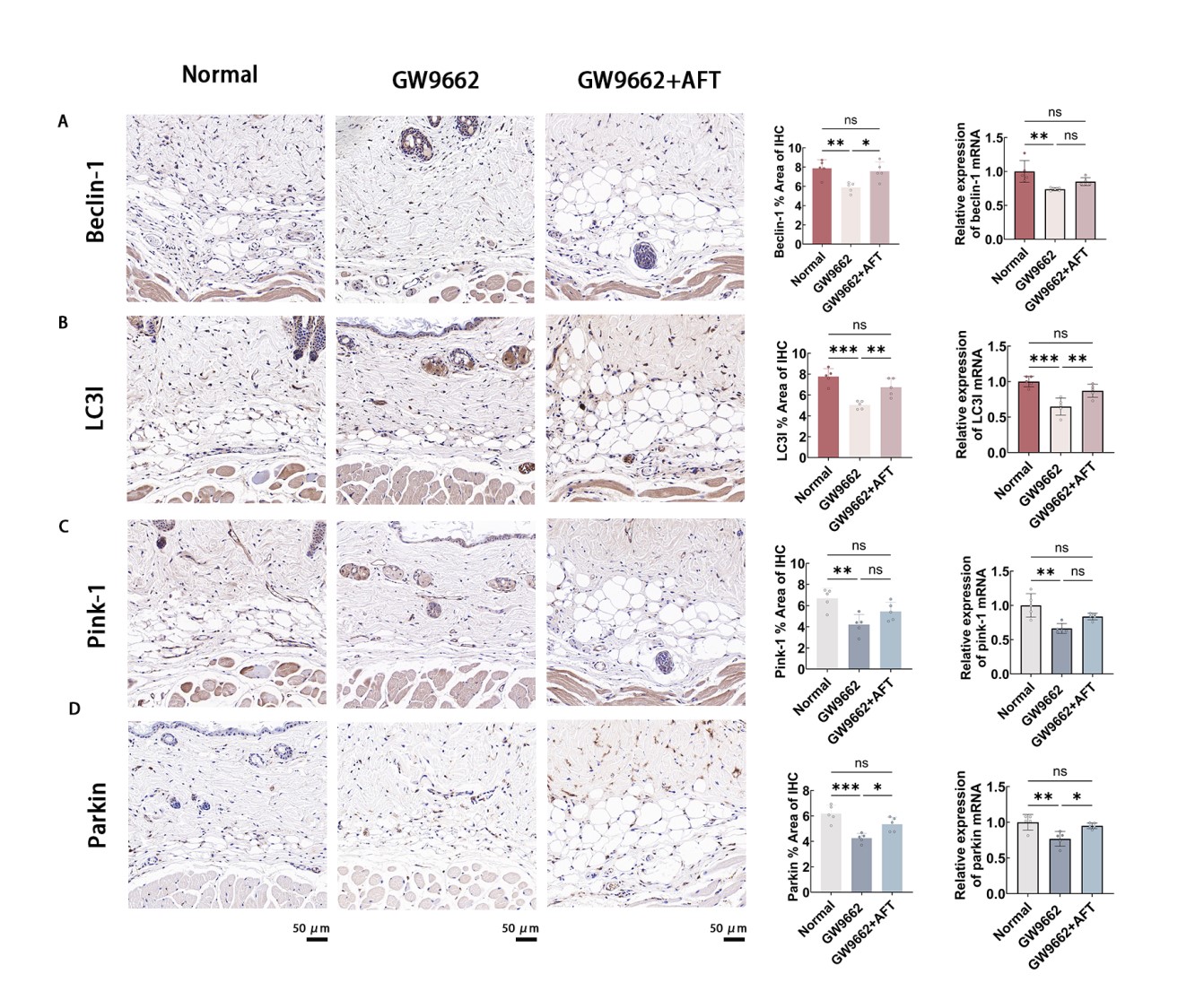Fat grafting improves dermal adipose autophagy and mitophagy
Published 14 July, 2025
A research team from the Peking Union Medical College Hospital has uncovered how dysfunctional dermal white adipose tissue (dWAT) contributes to skin fibrosis and how autologous fat grafting may reverse this process. Their findings, published in the Chinese Journal of Plastic and Reconstructive Surgery, highlight the central role of the PPAR-γ–TGF-β1 axis in mediating fibrosis and offer new avenues for therapy.
Skin fibrosis, including conditions such as scleroderma, is characterized by excessive collagen deposition and loss of normal skin architecture. While most studies have focused on fibroblasts or immune cells, this study shifts attention to dermal adipocytes.
“Using a mouse model treated with a PPAR-γ inhibitor (GW9662), we induced dWAT dysfunction, which led to fibrotic changes including reduced adipogenic markers (PLIN-1, PDGFR-α) and elevated fibrosis-related genes (Col-1, α-SMA, and TGF-β1),” explains Dr. Zhijin Li, lead author of the study. “Histological analysis confirmed increased collagen deposition in the dermis.”
Notably, subcutaneous fat transplantation following PPAR-γ inhibition significantly restored dWAT structure and reduced fibrosis. “Both gene expression and proteomic analyses demonstrated reversal of fibrotic signatures, suggesting that fat grafting not only restores adipose homeostasis but also actively suppresses fibrogenic pathways,” adds Li.
Taken together, the team’s findings suggest that dermal adipose dysfunction is not merely a consequence of fibrosis but may actively drive it. “Our study reinforces the regenerative value of autologous fat grafting—a widely practiced clinical technique—in scar revision and tissue repair,” says Li.

Contact author name: Zhijin Li, Department of Plastic and Reconstructive Surgery, Department of Plastic and Reconstructive Surgery, Chinese Academy of Medical Sciences and Peking Union Medical College, Beijing, 100730, China. Email: y294417157@qq.com.
Funder: This study was supported by the Natural Science Foundation of Beijing, China (grant no. L244062) and the Peking Union Medical College Hospital Talent Cultivation Program (Category C) (grant no. UBJ11557).
Conflict of interest: The authors declare that they have no competing interests.
See the article: Li Z, Wen J, Yu N, et al. Subcutaneous fat transplantation improves dermal adipose dysfunction by regulating autophagy and mitophagy. Chin J Plast Reconstr. 2025(7)2: 59-65.https://doi.org/10.1016/j.cjprs.2025.06.002